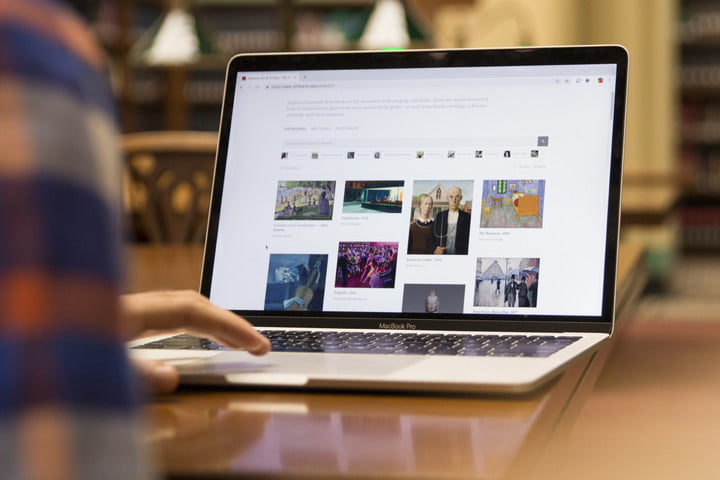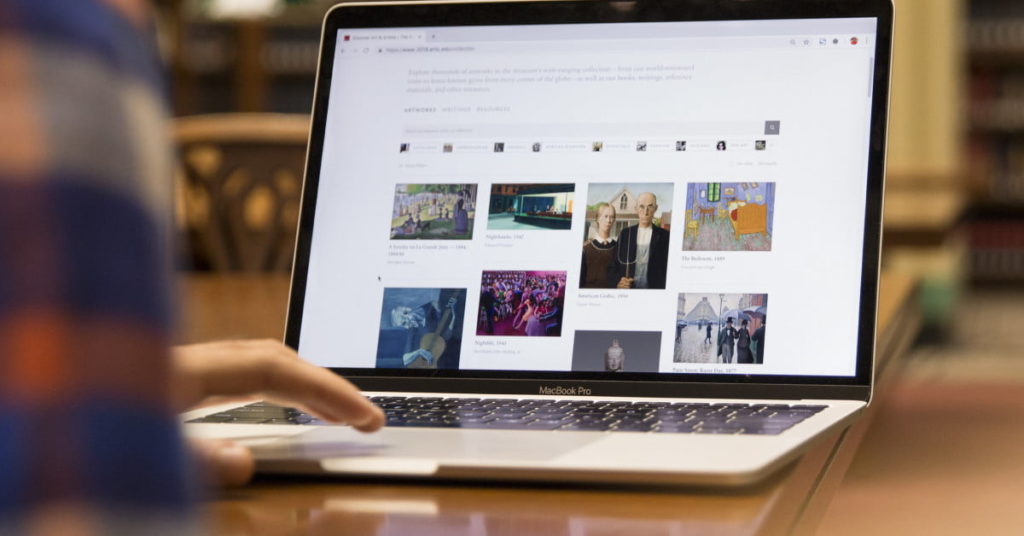Zoom in on Famous Works on the Art Institute of Chicago’s New Website

The Art Institute of Chicago has given its website a significant makeover to create an interactive experience that shows off much of what the museum has to offer.
Besides the new look and improved usability of the revamped website, notable extras include the addition of more than 50,000 images of works by a huge range of artists, among them Andy Warhol, Vincent van Gogh, Claude Monet, and Paul Cézanne. Photos of sculptures and other artworks are also included, and clicking on an image brings up more detailed information about each one.
A nice touch is the ability to zoom in close to the piece, allowing you to see their unique features in much greater detail.
“Check out the paint strokes in van Gogh’s The Bedroom, the charcoal details on Charles White’s Harvest Talk, or the synaesthetic richness of Georgia O’Keeffe’s Blue and Green Music,” suggests Michael Neault, the museum’s executive director of digital experience.
Another bonus is that if you find a particularly special image and it’s accompanied by a download button at the bottom right of the screen, it can be yours for the princely sum of nothing under the Creative Commons Zero license.
The website’s developers are also developing ways to help visitors surface “lesser-known artworks that are just as interesting but may be under the radar,” hopefully leading to some pleasant discoveries as you explore the site’s content.
The revamped web presence also includes an improved layout to aid those who’re looking to visit the Art Institute of Chicago in person. And for the time-pressed, be sure to check out the handy what-to-see-in-an-hour guide that’ll ensure you don’t miss any of the galleries’ most iconic works as you scuttle around the building.
The impressive update marks the website’s first redesign in five years, a lengthy time span in the fast-changing world of the internet and a point not lost on Neault.
“Whereas we once mostly pointed our browsers to specific websites, today we often let content come to us directly through social media feeds,” Neault wrote in a piece unveiling the new site. “Even the devices we use have changed — today, people access the web through mobile devices just as much as with desktops, and this trend is increasing every year.”
He added: “With this redesign, we’ve gone from creating a singular website to becoming a more dynamic presence on the web. So no matter how you digitally encounter our content — through email subscriptions, keyword searches on search engines, or stories on social media — we want to help you find the artworks that inspire you.”




